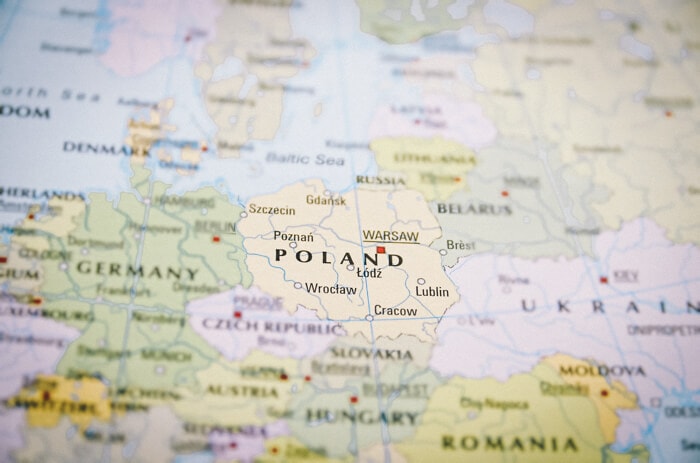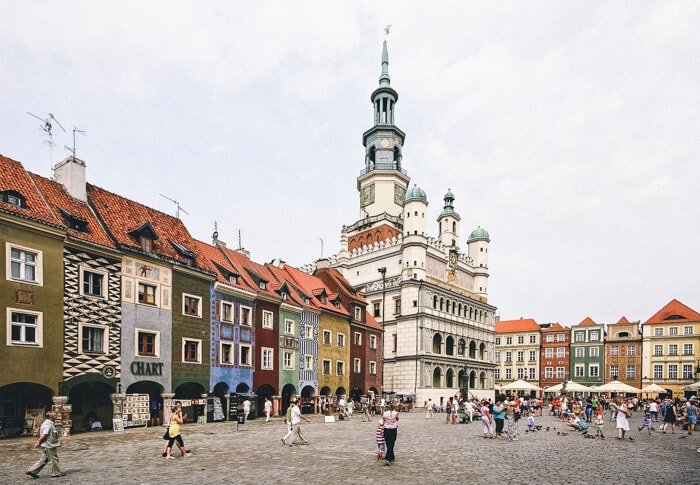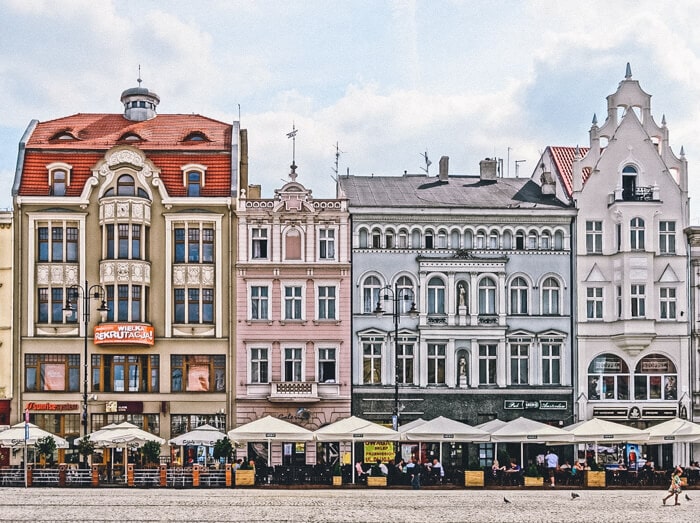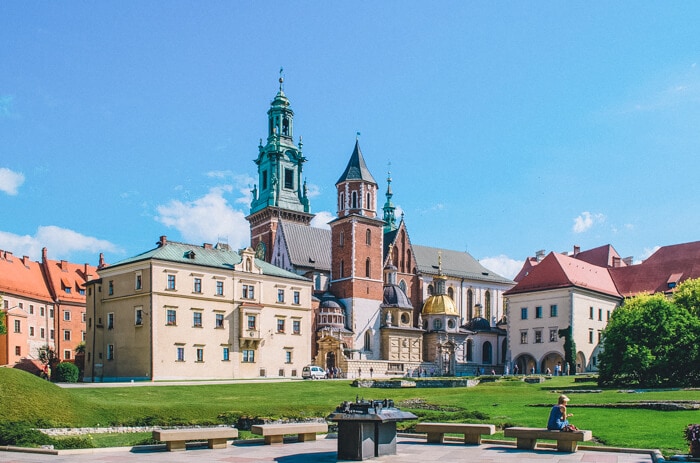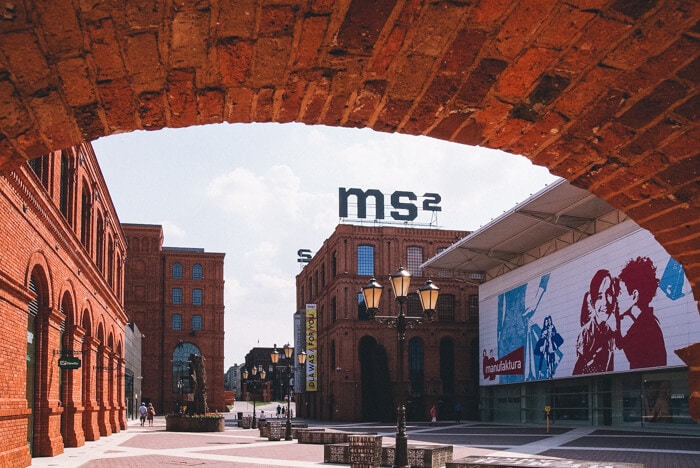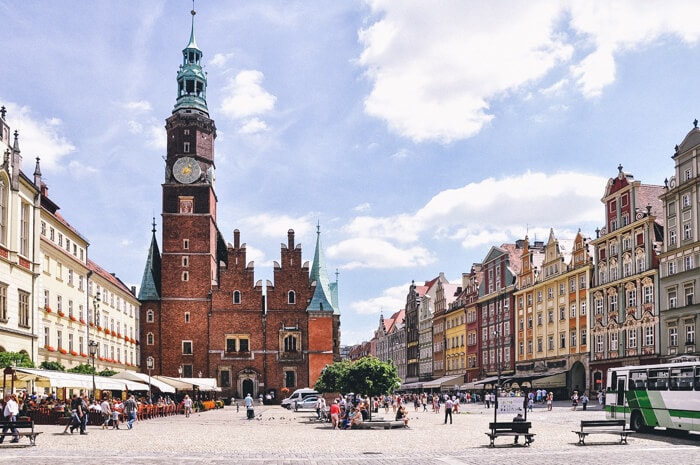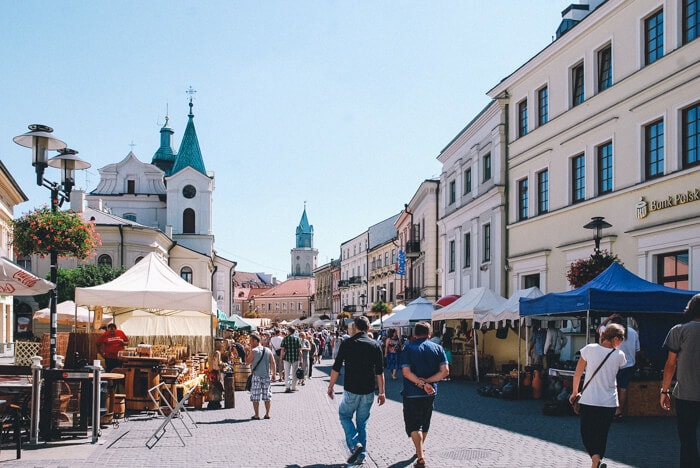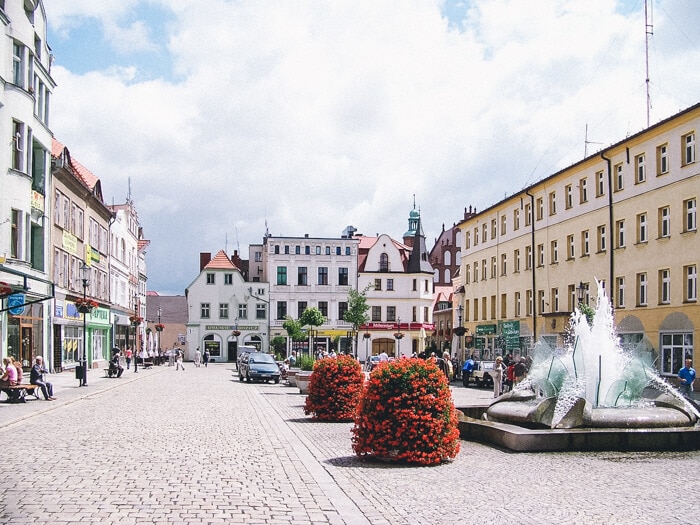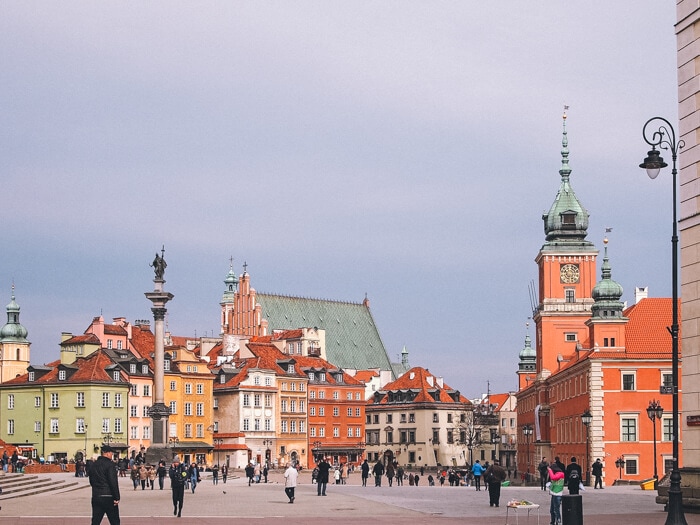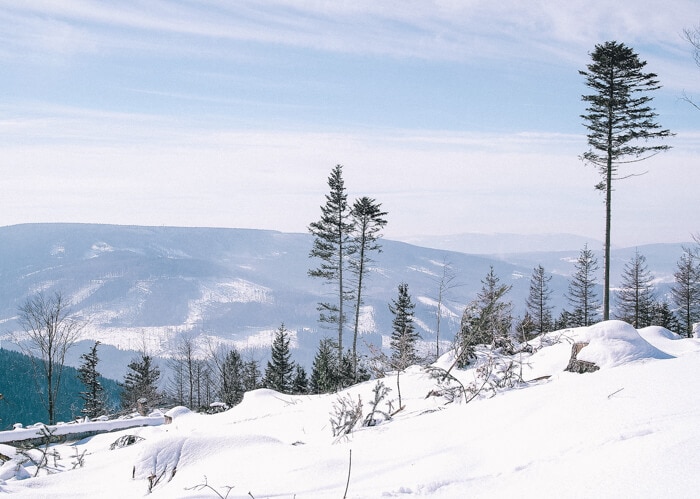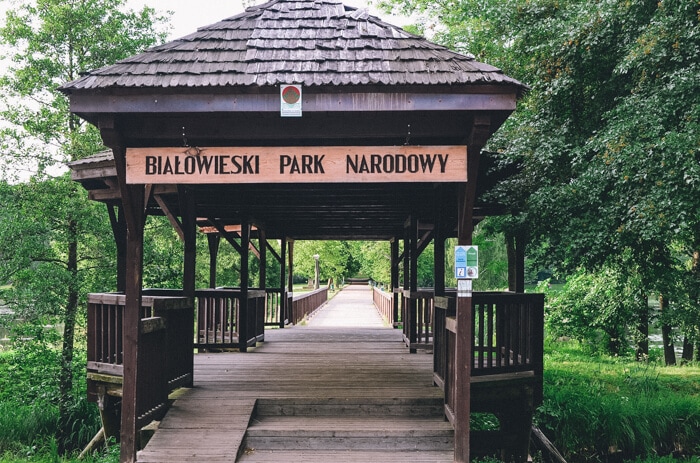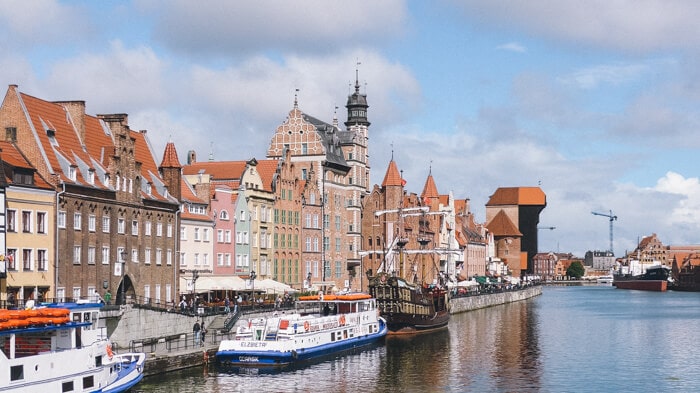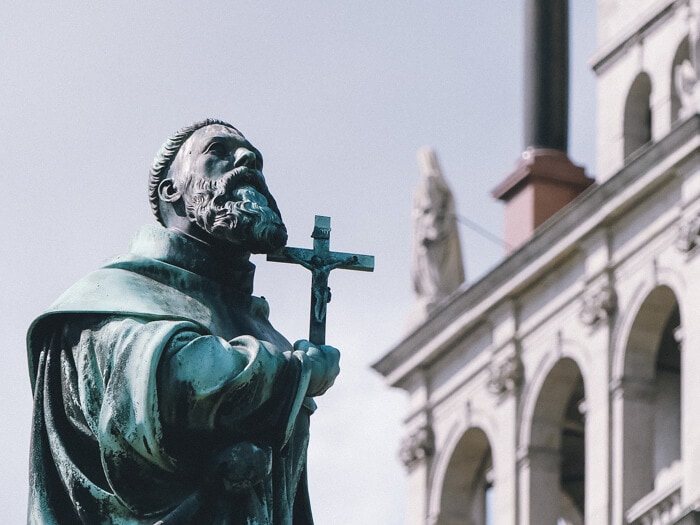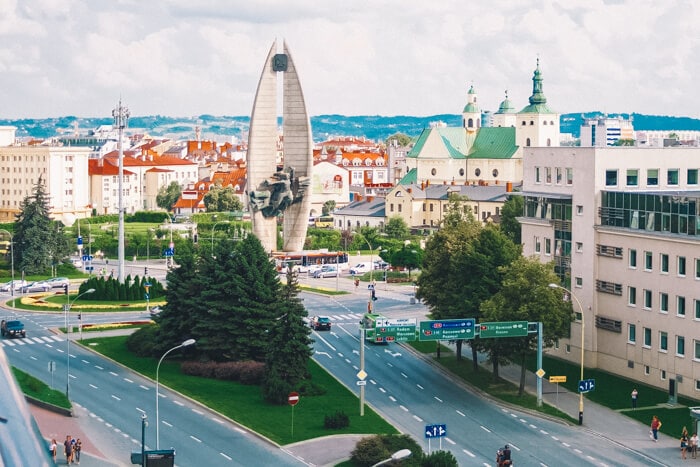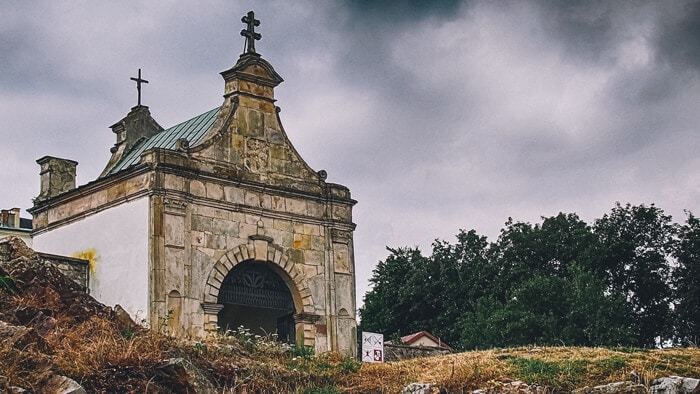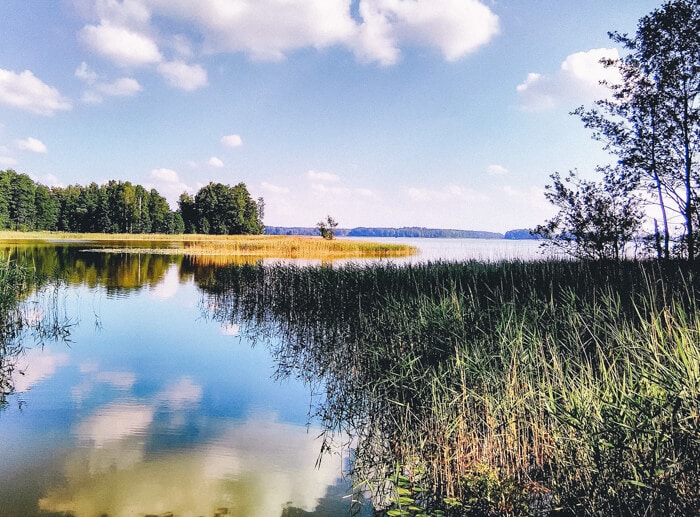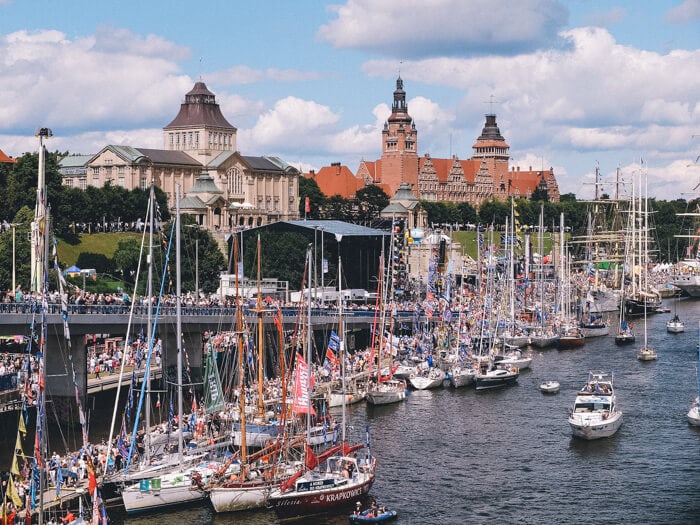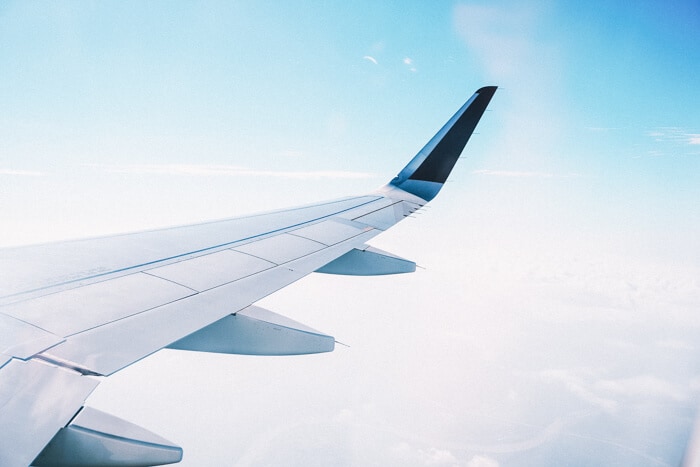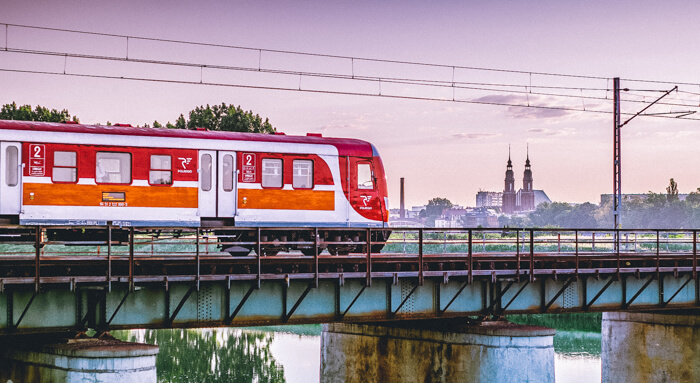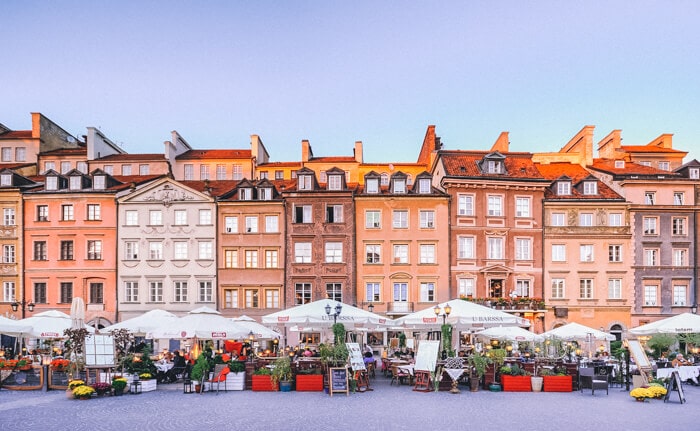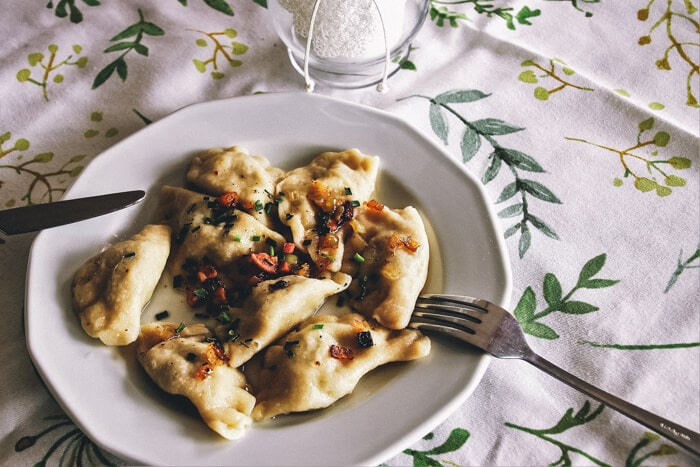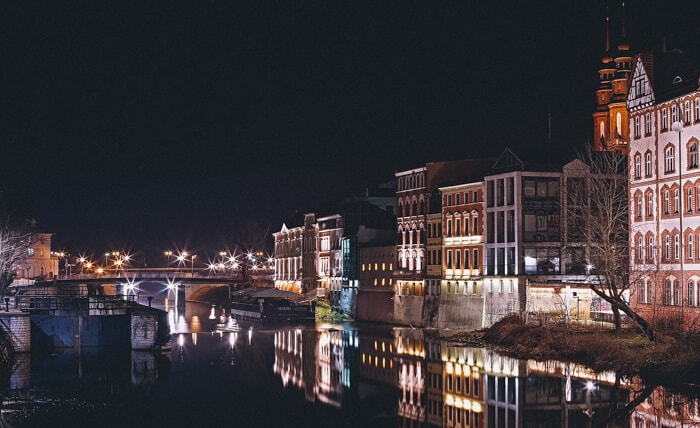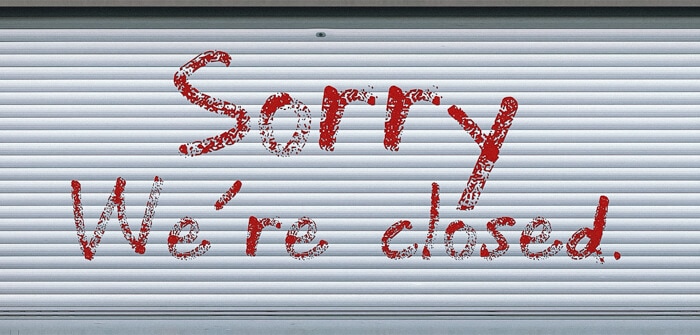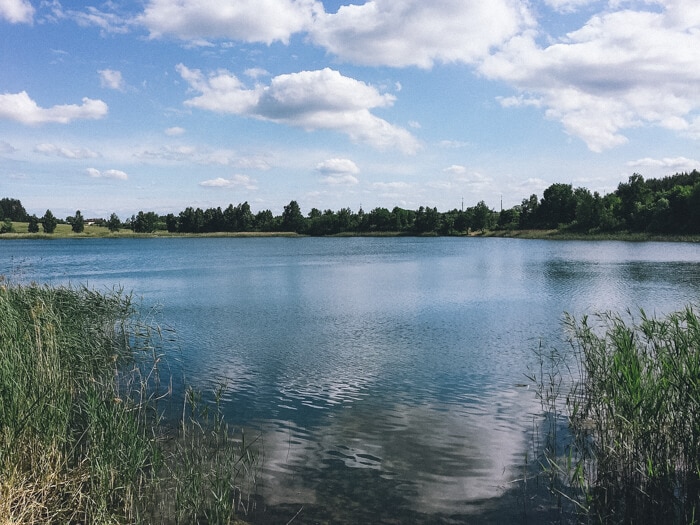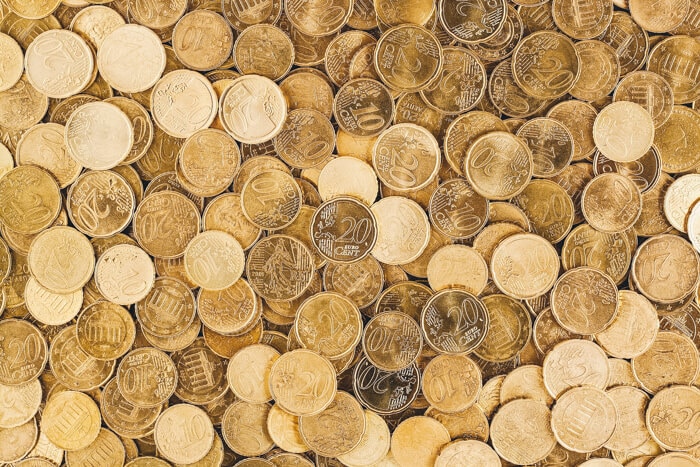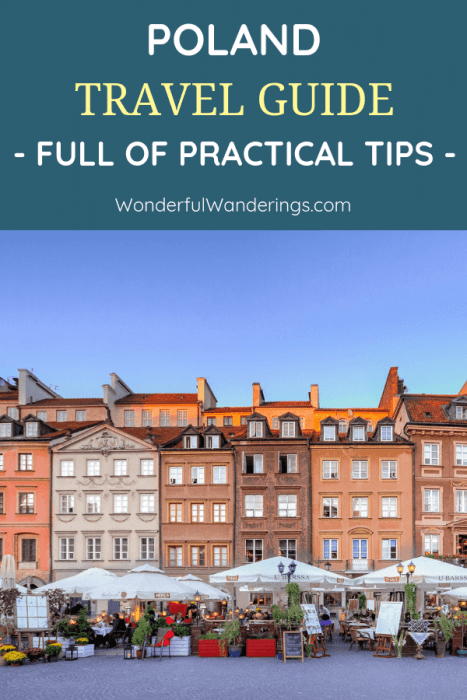Planning your Poland vacation? Great! This guide will help you do that.
Poland is the 9th largest country in Europe. Bordered by Germany, Czechia, Slovakia, Ukraine, Belarus, Lithuania, Russia, and the Baltic Sea, this incredibly resilient country has been at the center of European politics for nearly 1,000 years.
Poland has a complicated and complex history. The country spent a great deal of its existence fighting off invaders or being occupied by foreign rulers. In the 20th century, Poland found itself in the middle of the Second World War, which brought unprecedented destruction to Polish soil.
Today, Poland is a member of the EU and the North Atlantic Treaty Organization (NATO). It’s a culturally rich nation that is home to large bustling cities as well as unspoiled, remote countryside and 16 UNESCO World Heritage Sites.
Contents
- Poland vacation guide: quick facts
- Poland provinces/states
- How to travel to Poland
- How to travel around Poland
- Where to stay in Poland?
- What to pack for Poland
- The best time to travel to Poland
- What to eat in Poland
- Famous events in Poland
- Public holidays in Poland
- Things to buy in Poland
- Cultural customs to be aware of in Poland
- Don’t forget travel insurance
- Basic phrases and their pronunciation
- How safe is Poland?
- The use of cash and cards in Poland
- Calling abroad, WiFi and data use in Poland
- Tipping in Poland
- A brief history of Poland
- Posts about Poland
Poland vacation guide: quick facts
Size: 312,679 km2 or 120,696.41 sq mi
People living there: ~38,480,000
Capital: Warsaw
Governmental structure: Consitutional Parliamentary Democracy
National day: May 3
Time zone: Central European Time / UTC+1 / GMT+1
Currency: zloty (PLN)
Power voltage and socket type(s): 230V, plug types C and E.
Official religion(s)/Freedom of religion: Freedom of religion with the majority of the population being Roman Catholics.
Official language(s) and general knowledge of English: The official language is Polish. English is spoken in the bigger cities and in tourist areas.
Drives on this side: right
International driver’s licence accepted? Yes.
Phone code: +48
Vaccinations required? No
Is it safe to drink the tap water? Yes
Not enough tidbits for you? Check out our post full of facts about Poland.
Poland provinces/states
Poland is divided into 16 provinces, or voivodeships.
Greater Poland
Located in west-central Poland and sometimes called the “cradle of Poland”, this province is home to most of the country’s historic regions. The capital of the region, Poznan, is home to the oldest Polish church dating to the 960s, a beautiful gothic and baroque Old Town as well as 20th-century Prussian architecture. Greater Poland is also home to the city of Gniezno, which is known for its arch cathedral from the year 1000.
Kuyavian-Pomerania
Kuyavian-Pomeranian Voivodeship is unique in that it has two cities that serve as the region’s joint capital: Bydgoszcz, referred to as “Little Berlin,” and Toruń, the birthplace of Copernicus. In this province, you will find no shortage of walkable Old Towns, medieval castles, remarkable architecture, and ancient churches. The area has a unique blended culture from years of German and Polish influence.
Lesser Poland
This province draws the most tourists out of all of Poland’s voivodeships. Located in the south of the country, Lesser Poland has 4 national parks, Poland’s most popular winter resort, Europe’s oldest salt mine in Bochina, and the region’s capital city of Kraków. You will also find this province to be one of the most sobering as the former Nazi concentration camps Auschwitz-Birkenau and Auschwitz-II.
Read about my experience at Auschwitz.
Łódź
Although Łódź is not on most tourists’ radar, it shouldn’t be overlooked. Quaint old towns, rich industrial history, and a town nicknamed the “Polish Manchester” that has the longest walking street in Europe.
Lower Silesia
If you want to see Polish castles and churches, this is the voivodeship you should visit. The Lower Silesian Voivodeship overflowing with breathtaking architecture. It’s also home to the region’s capital city of Wrocław, another Polish city that was destroyed during WWII and successfully rebuilt. This province is also home to several spa towns.
Lublin
Before WWII, the area that now belongs to the province of Lublin was one of the world’s leading centers for Judaism. By the 20th century, Jews represented from 70-100% of urban populations in the towns of Lublin and the larger cities of Laszczów and Izbica and were home to several Jewish religious figures and scholars.
During the war, with an estimated 45,000 Jewish prisoners, this province became one of the largest forced labor centers in all of occupied Europe. Most of the region’s tourism is attributed to Jewish visitors returned to explore their family history.
Lubusz
Lubusz is a beautiful province and home to 2 national parks and eight landscape parks. It also contains the city of Zielona Góra, the Polish wine capital.
Masovia
Home to Poland’s largest city, Warschau, the Masovian Voivodeship is one of a long and turbulent history. Some of the smaller cities such as Płock, Radom, and Ciechanow have gothic and medieval sights. But, the crown jewel is Warsaw, one of the EU’s up and coming business centers. The Old Town was completely destroyed during WWII and was rebuilt as it would’ve been in the 18th century based on Venetian painter Canaletto’s cityscapes.
Opole
This province is the only one in Poland to remain with a significant, and legally recognized, German minority population. You will find everyday signs in both Polish and German in some areas. The Opole Voivodeship has 3 large lakes and the popular Opawski Mountains, making the area’s geography unique.
Podlaskie
You can’t visit the Podlaskie voivodeship without a visit to Bialowieża National Park. This UNESCO World Heritage Site is home to Europe’s only remaining bison population. The forests are home to unique vegetation as well as moose, lynx, and wolves. This region has the lowest population density because it consists mostly of unspoiled natural forest.
Pomerania
Located on the Baltic Sea, this voivodeship contains many sea resorts along the coast. You will also find Gdańsk, the regions biggest city and capital which was rebuilt after WWII and is arguably one of Europe’s most beautiful cities.
Silesia
Located in the southern part of Poland, Silesia’s capital city, Katowice, is known for its large coal and steel industries. If you visit this region, be sure to visit the Tarnowskie Góry’s silver mine, a UNESCO World Heritage Site. It’s also home to the Baroque National Shrine at Jasna Góra, one of the most important Roman Catholic pilgrimage sites, in Częstochowa.
Subcarpathia
Located at the foot of the Carpathian Mountains in the southeastern corner of Poland, this province is home to many Lublin Renaissance, Mannerist, and Baroque style palaces.
Holy Cross
If you’re looking to get in touch with nature and relax, the Holy Cross or Swietokrzyskie voivodeship is for you. Explore The Holy Cross Mountains, one of the earth’s oldest mountain ranges, which are home to stunning caves from the Jurassic era.
Warmia-Masuria
With over three thousand lakes, two of the most popular things to do in the Warmian-Masurian province are sailing and fishing. It’s also where the former Nazi Headquarters, The Wolf’s Lair, was located and where Hilter spent most of his time during the war.
Western-Pomerania
Located on the Baltic Sea, this province has a little bit of everything. Seaside resorts, bustling harbors, Medieval, Gothic, Renaissance, and Baroque architecture, sprawling forests, and festivals for everything.
How to travel to Poland
Entry requirements
Poland allows residents from EU countries as well as many other countries to enter with a valid passport and without a visa. Check their official entry requirements here.
Transportation
By bus
You can get to most major cities in Poland by bus. Flixbus is a great, and economical, way to travel from neighboring European countries.
Check timetables and rates for Flixbus here.
By train
Getting to Poland from any major European city is possible and Poland is part of the Eurail network which means you can include it on a Eurail Pass.
Check here for train timetables and prices within Europe.
By ferry
It is possible to take the ferry to Poland’s major port cities of Gdansk, Swinoujscie, Gdynia, and Szczecin. Passenger ferries are mainly available from Sweden, Finland, Norway, and Denmark and the crossing lasts one to two days.
- Polferries offers crossings between Poland and Sweden.
- StenaLine offers crossings between Poland and Sweden.
- Unity Line offers crossings between Poland and Sweden.
- TT Line offers crossings between Poland and Sweden.
Look here for an overview of ferry routes and prices to Poland.
Fly to Poland
Poland has airports in Warsaw, Gdansk, Krakow, Katowice, Szczecin, Bydgoszcz, Poznan, Lodz, and Wroclaw that are serviced by major international carriers such as Lufthansa, British Airways, and Scandinavian (SAS) as well as budget airlines like Ryanair, Wizz Air, and easyJet.
Check Skyscanner for a clear overview of flight options and prices.
How to travel around Poland
Getting around Poland on your own
If you’re planning to stay in the big cities like Warsaw, Wroclaw, and Krakow, you will be able to use public transportation to get anywhere you need to go. If you want to explore the countryside and vast national parks, it would be best to rent a car.
Where to stay in Poland?
When I want to book a hotel, guest hous or bed and breakfasts, I always use Booking.com. It has a bunch of filtering options so I can easily get a list of only the hotels that meet my criteria. If youwant to book a place to stay in Poland, I highly recommend you check there.
Sometimes I want to book an apartment rather than a hotel and in those cases, I use Airbnb.
What to pack for Poland
The weather in Poland can be unpredictable, so packing layers you can add to or remove depending on the day’s climate will be your best bet. Poland’s terrain also makes packing layers a necessity. While it may be hot and balmy in the city during the summer, it might be cool with a dusting of snow in the mountains on the same day.
What to pack for Poland in summer
- sunglasses
- light clothing
- a raincoat
- comfortable walking or hiking shoes
- something to cover your shoulders for visiting religious sites, like this pashmina
- a re-usable water bottle
- good walking sandals
What to pack for Poland in winter
- merino woolen base layers
- merino woolen socks
- a warm, wind waterproof long coat
- merino woolen leggings
- snow boots
- good gloves
- a hat
- a warm scarf
- a re-usable water bottle
What to pack for Poland in fall and spring
- an umbrella
- a decent rain jacket
- layers
- sneakers
- a re-usable water bottle
The best time to travel to Poland
If you’re visiting Poland, you’re probably not coming for the great weather. The continental climate in Poland is consistent with the rest of central Europe–hot, wet summers, and cold, gray winters. While neither is a bad time to visit, late spring and early autumn are arguably the best times to visit due to milder temperatures, more sunshine, and less chance of rain.
What to eat in Poland
Polish cuisine is making a serious comeback after years of suppression during Communist times. Here are some classics you definitely don’t want to miss when you visit Poland:
- Pierogi, traditional fried or steamed dumpling filled with cheese, potatoes, cabbage, mushrooms, or onions and topped with sour cream
- Bigos, a hearty hunter’s stew with mushrooms, cabbage, and meats
- Placki Ziemniaczane, potato pancakes
- Zrazy, grilled beef rolls stuffed with bacon, mushrooms, breadcrumbs, and cucumber
- Mizeria, cucumber, onion, and dill salad with sour cream and lemon dressing
- Szarlotka, one of Poland’s most popular desserts, a mix between an apple pie and a cake
- Sernik, Polish cheesecake made from quark
- Rosol, the Polish version of chicken noodle soup
- Gołąbki, better known as stuffed cabbage
- Kabanosy, a slim, smokier kielbasa
Famous events in Poland
- Shanties: International Sailors’ Song Festival, Kraków (February): an international festival dedicated to maritime and sailors’ songs
- Cracovia Marathon, Kraków (April)
- Ludwig van Beethoven Festival, Warsaw (April): a two-week festival around Easter celebrating classical music
- International Book Fair, Warsaw (May): international writers and publishers gather at the Stalin-era Palace of Culture and Science for this event
- Jewish Culture Festival, Kraków (June): a festival to celebrate Jewish culture, dance, music, and film
- Malta International Theater Festival, Poznan (June): attended by tens of thousands of people each year, this is the country’s largest festival dedicated to the dramatic arts
- Selector Festival, Kraków (June): a 2-day long dance party with top bands and DJs in the dance, trance, electronic, and techno genres
- Chopiniana, Warsaw (July): concerts, film, theater, and ballet performances take place in venues connected to the famous composer from the area
- Feast of the Assumption, Czestochowa (August): attended by thousands of pilgrims each year who are traveling to the Jasna Góra monastery
- Christmas Markets (December): across Poland, glittering Christmas market stalls fill the town squares
Public holidays in Poland
Most businesses and government offices will be closed on the following days:
- New Year’s Day
- Epiphany (6 Jan)
- Easter Sunday and the following Monday
- Labor Day (1 May)
- Constitution Day (3 May)
- Pentecost Sunday
- Corpus Christi
- Assumption Day (15 Aug)
- All Saints Day (1 Nov)
- Independence Day (11 Nov)
- Christmas Day (25 Dec)
- St Stephens Day (26 Dec)
Things to buy in Poland
- Polish pottery
- Gdansk amber
- Bison grass vodka
- Salt from the Wieliczka Salt Mine
- A Wawel Dragon
- Traditional wood carvings
Cultural customs to be aware of in Poland
- Do not use first names until prompted to do so. Switching from the use of formal to the informal names is an important step and there is a ritual to acknowledge the change in status and your invitation into their ‘inner circle’.
- Never give someone an even number of flowers.
- Toasts are only made with hard liquor.
Don’t forget travel insurance
No matter how well you plan and research a trip, there are always things that happen beyond your control. Something might get canceled, you can get ill or hurt while traveling or one of your electronics might break or get stolen. When misfortune strikes, travel insurance has got you covered. I’ve had ongoing travel insurance ever since I started traveling to make sure I’m covered for every trip I go on. Don’t have insurance yet? You can get a free quote here:
Basic phrases and their pronunciation
Thank you
I’m sorry
Good morning
Good afternoon
Good evening
Good night
Hi
Bye
See you
Yes
No
Can we have the bill, please?
Bathroom
Price,
Right / left
dziekuje (“dsyenkooyeh”)
przepraszam (“pshehpraasham”)
przepraszam (“pshehpraasham”)
dzien dobry (“dsyeni dobry”)
dzien dobry (“dsyeni dobry”)
dobry wieczor (“dobry vyechoor”)
dobranoc (“dobra notz”)
czesc (“cheshch”)
czesc (“cheshch”)
do widzenia (“doh vidsenya”)
tak (“tahk”)
nie (“nye”)
prosze o rachunek (“proshe o rakhooneck”)
lazienka pronounced ‘uazienka”)
cena (“tzenah”)
prawo/lewo (“pravo”/”levo”)
How safe is Poland?
So is it safe to travel to Poland? Yes! Poland is ranked the 17th safest country in the world. However, visitors should watch out for pickpockets, bag snatching, ATM scams, and being overcharged.
The use of cash and cards in Poland
The official currency of Poland is the Zloty (ZWAH-tee). A few places near the borders may accept Euro, but exchange rates will be poor. Wait until you arrive to take local currently out at an ATM. Credit cards are widely accepted in Poland, especially around tourist attractions. Even most smaller retailers accept credit card payments, but it is always a good idea to carry some cash.
Calling abroad, WiFi and data use in Poland
Those with a SIM card from an EU country don’t have to pay roaming charges when calling, texting, or using data in Poland. The same goes for some global phone plans.
If you don’t have a EU SIM but still want to have unlimited WiFi, check out Solis Wifi.
Skyroam offers both day passes and monthly subscriptions providing you with 4G throughout your trips. I’ve been using their daily passes not just when I travel outside the EU (no roaming charges for me in the EU) but also as a backup for when I think I’ll go over my phone’s data plan.
Check out Solis Wifi here.
Tipping in Poland
Tipping isn’t mandatory in Poland but it is highly appreciated. Especially taxi drivers will expect you to at least round up the bill. And then there’s this thing where you have to avoid thanking the waiter when you give him cash for the bill if you want him to come back with your change. If you want to know more about what and how to tip in Poland, read this.
A brief history of Poland
The advent of Polish history begins with the arrival of the Slavonic tribes around the 5th or 6th century AD. In 1025 Poland crowns its first king, Boleslaw the Brave after he defeated Otto III, the Holy Roman Emperor. In 1226, the Order of Teutonic Knights were invited to snuff out paganism among the Baltic Prussians.
The Knights overstayed their welcome well into the 14th century, which resulted in 16 years of war between the Teutonic Order and Poland. In 1385, in an effort to strengthen themselves against the Teutonic Knights, Poland and Lithuania formed the Polish-Lithuanian Union by the marriage of Jagiello, the Grand Duke of Lithuania and Jadwiga, the Queen Regent of Poland. The Grand Duke became King of Poland, creating the Jagiellonian Dynasty, and the Teutonic Knights were defeated.
During the 16th century, Poland was flourishing economically. In 1543, Poland’s own Nicolaus Copernicus published the revolutionary theory that the Earth rotates on an axis and orbits the sun. In 1569, the unification of the Kingdom of Poland, the Great Duchy of Lithuania, and The Ukraine made Poland the largest country in all of Europe.
Poland also found itself in the throes of the Protestant Reformation but, in 1573 the Compact of Warsaw allowed for the freedom of worship throughout the country. In 1572, Poland was left without an heir and the Polish monarchy switched from hereditary to elective, voting in their next king. The capital was moved from Krakow to Warsaw in 1596.
For almost the entire 17th century, whether it be Sweden, Russia, Turkey, or Austria and Germany, Poland was at war with one European power or another.
With a weak central government, the 18th century brought more in the way of military and political decline for Poland. Germany and Russia heavily influenced who was elected king. Russian Empress Catherine the Great had her former lover, Stanislaw Poniatowski elected as the king of Poland in 1764. Polish dissatisfaction lead to a number of failed uprisings leading to the partition of Polish lands between Russia, Austria, and Prussia.
In 1791, under Poniatowski’s rule, the country introduced a Polish Constitution, the first in Europe and second in the world after the United States of America. In 1794 however, both Warsaw and Krakow were lost to Russia and Austria. In 1795 the Polish king abdicated, effectively wiping Poland off the map.
It wasn’t until after the end of the First World War that Poland finally regained its freedom when a new Polish Constitution was published in 1921. In the 1930s, Poland found itself threatened on both sides by Nazi Germany and Communist Russia and in 1939 the two powers secretly agreed to split Poland between them. On the 1st of September, Germany invaded Poland and 16 days later Russia invaded in the east. Warsaw fell on 27 September. The Polish government continued to operate out of London and the Polish army gathered 200,000 men in France. The Polish people suffered tremendously during the war with over 3 million Polish Jews murdered and 3 million other Poles killed.
After the war, with a loss of nearly 25% of their population from the war, the country was left devastated. Although the Nazis were defeated, Poland remained under the oppressive rule of Stalin’s Soviet Union. In 1952 Poland became a communist country and spent until 1988 in deep debt with low living standard and high cost of living.
In 1989, communist tyranny came to an end as the Polish parliament implemented free elections for a majority of its seats and the free and democratic Republic of Poland was established. In October 1991, completely free elections were held and Poland underwent the transition from communism to capitalism. In 1999, Poland became a member of NATO and in 2004 it joined the European Union. Today, Poland is a vibrant and thriving center for culture and a fantastic place to travel.
Posts about Poland
Click here for all the posts I’ve written about Poland.
PIN FOR LATER
Find below our best travel guides about Poland.

